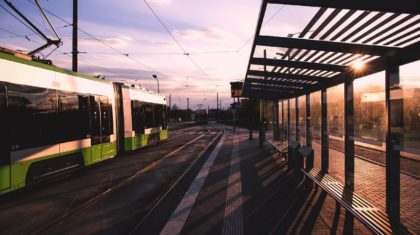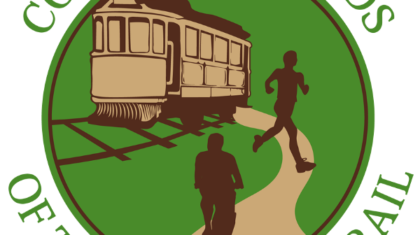
The Complete Streets effort in St. Louis is finally taking hold
by Kevin Neill, Planner, Alta Planning + Design
Progress comes slowly in St. Louis, but it’s not for a lack of effort, I assure you. Just a short bike ride through the red brick landscape and you’ll see signs of rebirth in this river city: rehabbed century-old houses, nearly a dozen microbreweries and brewpubs scattered across the city, vibrant cultural and commercial districts, the bourgeoning Cortex biosciences and technology hub along the MetroLink light rail line, and even the bellwether of a brighter future is on its way — an Ikea. But to say these changes have happened quickly would dismiss the years of determination, planning, collaboration, and hard work it has taken to get here.





In St. Louis, our sense of progress is deeply rooted in our past. While our deep roots and strong connections to the past have instilled St. Louisans with a great sense of pride, these traits have also helped to develop the City’s conservative cultural spirit and its slow, deliberate, and occasionally begrudging acceptance of change. Bold ideas are often received with skepticism, if not cynicism. As William Duncan Vandiver, a U.S. Congressman from Missouri, once put it, “…frothy eloquence neither convinces nor satisfies me. I am from Missouri. You have got to show me.” For Missourians, it’s a show-not-tell cultural mindset.
Enter Complete Streets. With a premise so simple, it’s hard for many to believe that the idea of building streets for everyone must be legislated and codified. The concept of Complete Streets is no longer new or flashy to most local agencies in the St. Louis area, whose planning and public works staff –know the subject well. Planners, engineers, elected officials, and even area residents are interested in expanding transportation options, but there’s a reluctance to venture into new territory, to change the modus operandi, and to look at transportation infrastructure through a new lens. For some, new legislation means additional paperwork and red tape for local staff, even for the simplest of projects. For others, the perceived costs of “bike lanes and sidewalks on every street” will break the bank. The ultimate end of a fully accessible and connected transportation system can be overshadowed by the many small, yet inconvenient, means necessary to achieve it.
This reluctance was confronted head on in October of last year, when a Complete Streets Bill came before the St. Louis County Council. Over the next three months, members of the County Council worked with the county Departments of Planning, Highways, and Traffic, Trailnet (the local active transportation advocacy organization), and other important stakeholders to refine the legislation while retaining the original intent and vision. After months of debate, considerable lobbying from local advocacy organizations, and two substitute bills, the County Council passed a Complete Streets policy in January.
While this county policy might be the biggest victory for Complete Streets in the St. Louis region to-date, it’s certainly not the first. Local examples of Complete Streets policies, planning, design, and projects are abundant. In 2008, the City of Ferguson, a suburb of 21,000 just 12 miles northwest of downtown St. Louis became the first local agency to adopt a Complete Streets policy. In 2010, the City of St. Louis adopted one as well, solidifying its commitment to streets for everyone. In 2012, Clayton, the civic and economic hub of St. Louis County, also adopted a Complete Streets policy. (Clayton’s policy was later named one of the top ten in the country by the National Complete Streets Coalition). More than a dozen St. Louis County municipalities have bicycle and pedestrian plans on the books. Great Rivers Greenway District, the regional parks and recreation district, has built miles of linear trails and worked with local, regional, and state agencies to develop the Gateway Bike Plan. This plan lays the groundwork for a coordinated — on-street bicycle transportation network for St. Louis County, St. Louis City, and St. Charles County. In addition, St. Louis County built its first ten miles of bike lanes just last year. East West Gateway, the region’s metropolitan planning organization, has worked on Complete Streets corridor projects with seven local municipalities through its Great Streets Program.
As a result of all these previous efforts, elected officials and St. Louis County staff were able to see the projects on the ground — the kinds of projects that embody the principles of Complete Streets: equity, accessibility, and connectivity. Local agencies and advocates presented a vision for a better transportation system, helping pave the way for these efforts by implementing simple overlays and even larger streetscape projects in order to benefit more users and provide a greater return on investment.
A grand vision usually precedes its own manifestation, but Missourians need tangible proof. You’ve got to show us. We want to see pilot projects. We want to get on the ground and experience these Complete Streets for ourselves. We want to put a face to a name. These pilot projects and incremental steps toward a truly multi-modal transportation system build momentum for policy change and bring the public into process, allowing residents to experience first-hand what a Complete Street is and how it functions. Only then can a larger vision materialize for a paradigm shift in transportation policy, bringing about safer, quieter streets throughout the St. Louis region that will accommodate users of all ages, abilities, and transportation modes.


